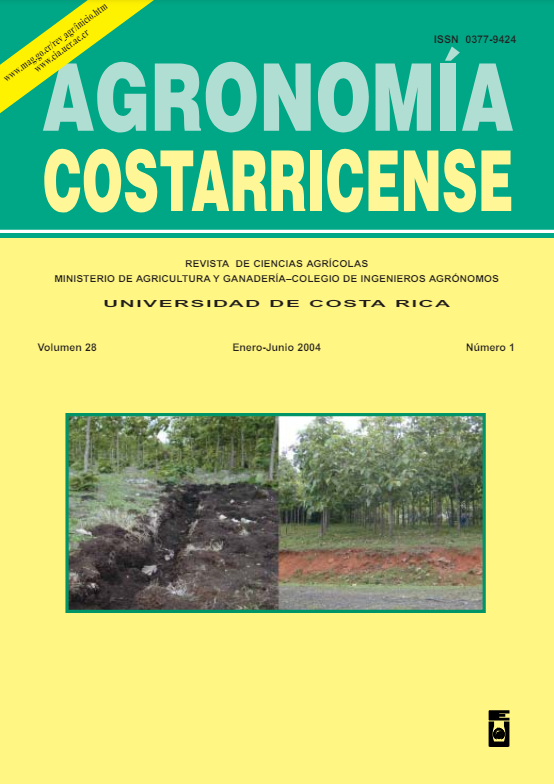Abstract
This study analyzed precipitation and temperature data taken in situ for 12 years, to determine the effects on the phenology of various woody plants, and the management of a coffee plantation in Ciudad Colón de Mora, Costa Rica. The general climatic pattern of the region is that described for the Central Valley. For the majority of the months analyzed, no significant temporal changes were detected over the years (except for September, in which the amount of rain increased, and August where the difference between the maximum and minimum temperatures also increased), but important oscillations were observed during “El Niño” and “La Niña”. These events had significant impact on flowering, fructification and management practices implemented on the coffee plantation, increasing or reducing these processes, or making them to occur earlier or latter on those particular years. Also, important deviations in the phenological cycles of various tree species were observed. A positive correlation (P<0,01) was observed between the productivity of the coffee plantation and the accumulated amount of rain fallen between December and April, but a negative one with respect to the maximum temperature and the magnitude of the temperature difference between the maximum and the minimum. Over the years analyzed, significant monthly changes were determined in relation to flowers developed
and fruit matured in the coffee plants, and a gener al decrease in productivity of the coffee plantation (the lowest values were obtained after 1997-1998). The blooming and fruit maturation month was dis placed until latter in the year. Other factors, in addition to the climatic ones, may have interacted to explain these changes, such as the appearance of rust in the 80´s, changes in the coffee varieties in the plantation, reduction in the amounts of fertilizers applied, and others. The importance of having a good database of meteorological data, to make better agronomical decisions in case abnormal climatic events are prognosticated, is emphasized.
##plugins.facebook.comentarios##

This work is licensed under a Creative Commons Attribution-NonCommercial-NoDerivatives 4.0 International License.
Copyright (c) 2024 Agronomía Costarricense


